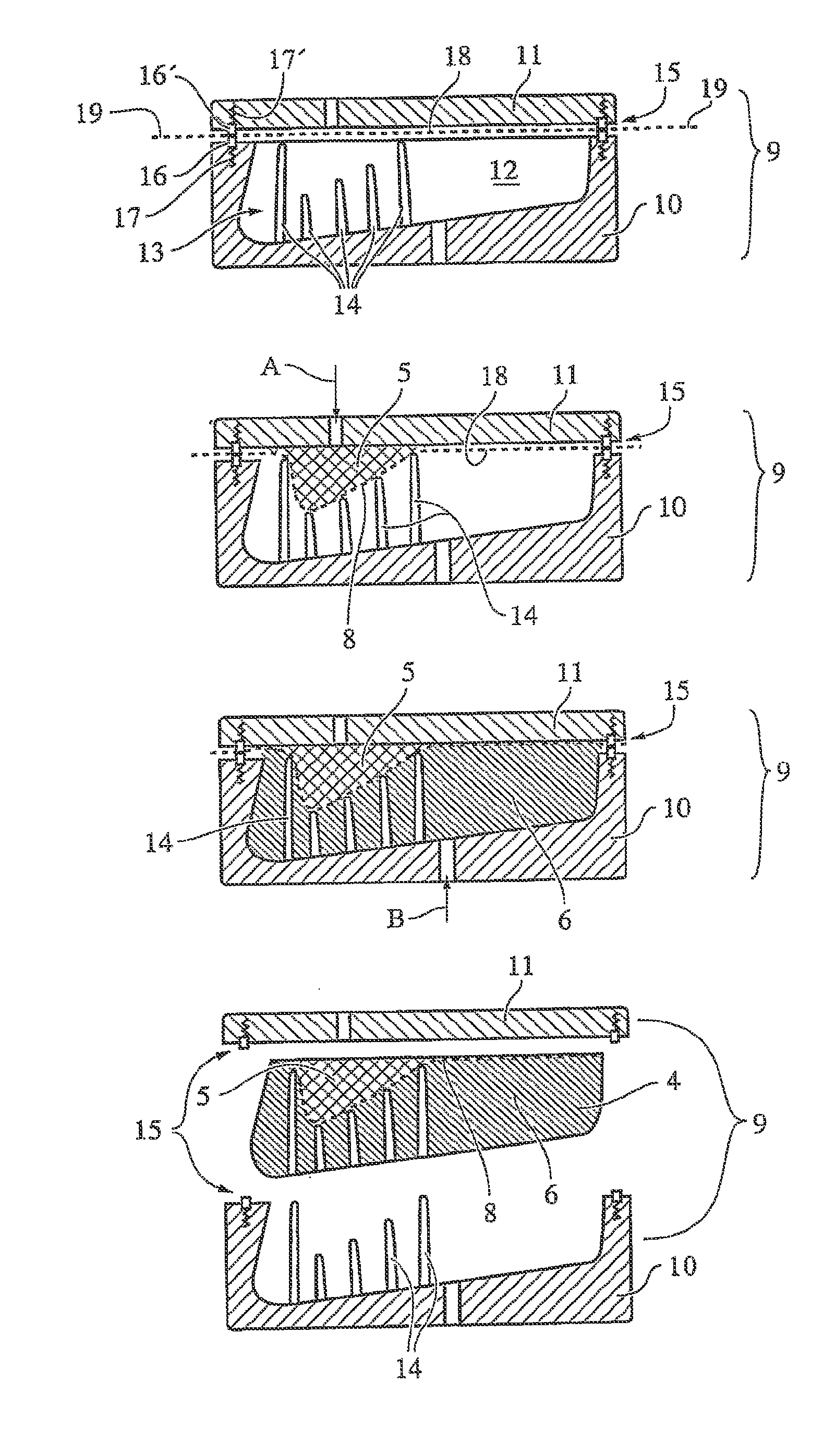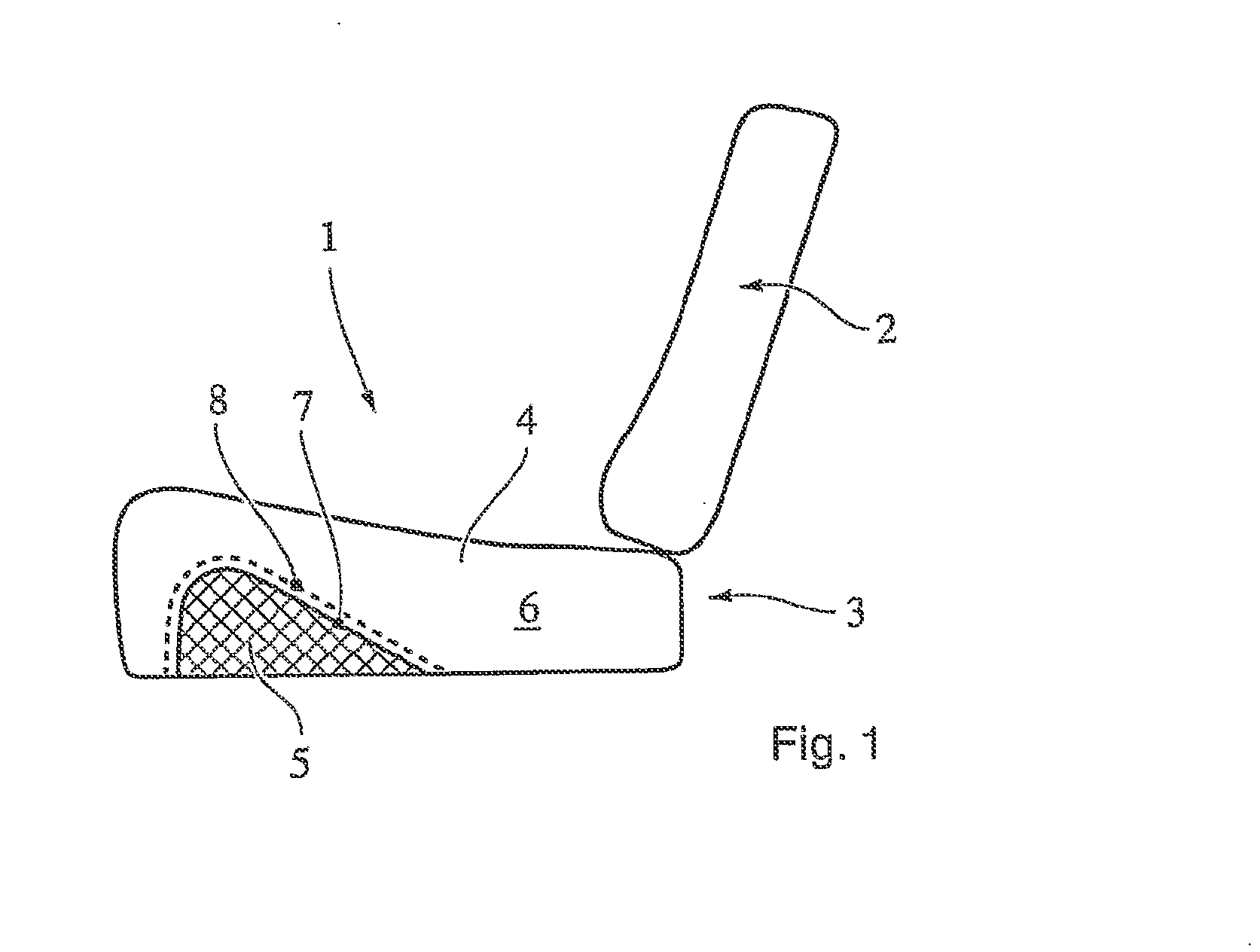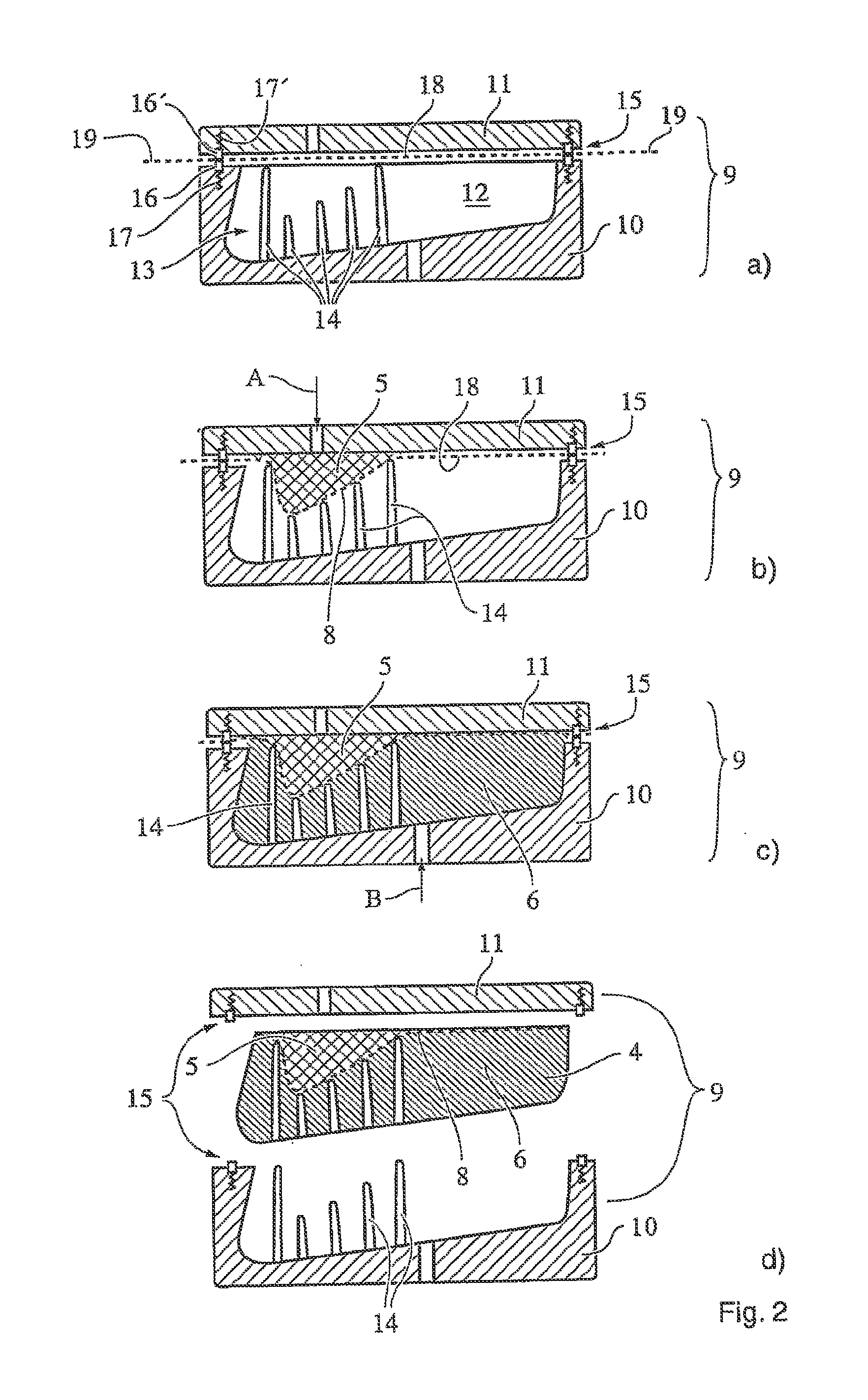Method for producing a cushion element and method and tool for the production thereto
a cushion element and cushion technology, applied in the field of cushion element production, can solve the problems of complicated clamping of the pocket in the die filled with the already foaming flexible foam compound, high cost of the procedure, limited spatial design options, etc., and achieve the effect of simplifying the introduction and improving comfor
- Summary
- Abstract
- Description
- Claims
- Application Information
AI Technical Summary
Benefits of technology
Problems solved by technology
Method used
Image
Examples
Embodiment Construction
[0028]The motor vehicle seat 1 shown in FIG. 1 consists of a backrest 2 and a seat cushion 3, the cushion element 4 of which has a first foamed cushion region 5 consisting of a relatively rigid foam and a second foamed cushion region 6 consisting of a relatively flexible foam. The rigid cushion region 5 extends substantially in the front part of the cushion element 4. In this case, the upper surface 7 of the cushion region 5 rises in the manner of ramp from the rear to the front and forms a device to prevent the seat occupant from plunging through the seatbelt.
[0029]Directional and positional details refer to the customary installation position of a motor vehicle seat.
[0030]A textile, three-dimensionally shaped separating element 8 is arranged between the first cushion region 5 and the second cushion region 6, said separating element being gas-permeable but being impermeable to the liquid, foamable compounds provided for forming the cushion regions 5 and 6.
[0031]FIG. 2 illustrates t...
PUM
| Property | Measurement | Unit |
|---|---|---|
| foamable | aaaaa | aaaaa |
| structure | aaaaa | aaaaa |
| gas-permeable | aaaaa | aaaaa |
Abstract
Description
Claims
Application Information
 Login to View More
Login to View More - R&D
- Intellectual Property
- Life Sciences
- Materials
- Tech Scout
- Unparalleled Data Quality
- Higher Quality Content
- 60% Fewer Hallucinations
Browse by: Latest US Patents, China's latest patents, Technical Efficacy Thesaurus, Application Domain, Technology Topic, Popular Technical Reports.
© 2025 PatSnap. All rights reserved.Legal|Privacy policy|Modern Slavery Act Transparency Statement|Sitemap|About US| Contact US: help@patsnap.com



